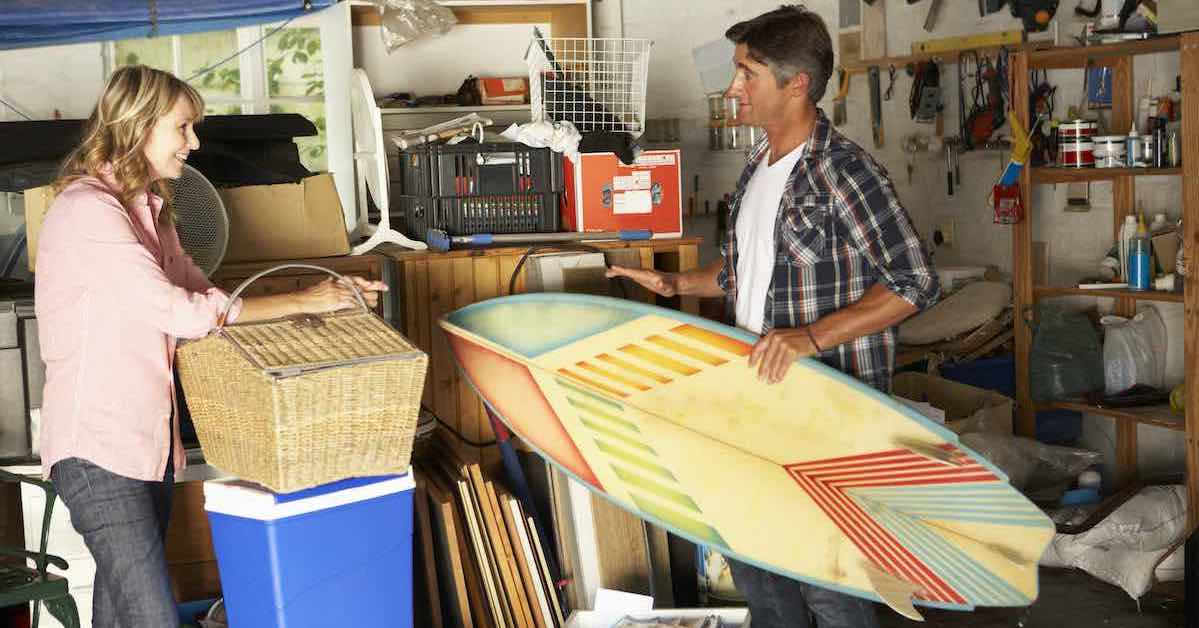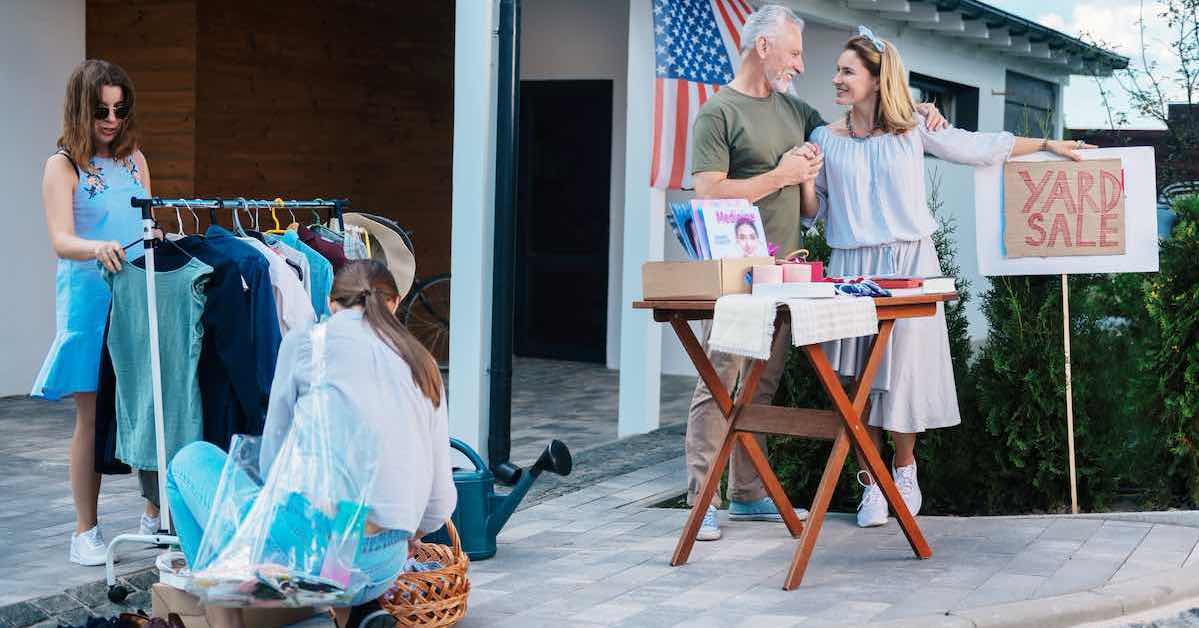Everyone wants to save money on residential moves. Having a yard sale is a great way to kill two birds with one stone. Owners reduce the number of things they must pack and pick up a little extra cash along the way. Today we will help you with pricing your yard sale.
However, for your yard sale, it’s important to carefully plan your work and diligently work your plan. Otherwise, the sale could be more trouble than it’s worth. And, it is very depressing to pack up items that no one wanted and return them to your closet.
At Green Van Lines, we cannot run your garage sale for you. But we are happy to share some tips we have learned which usually make these sales more successful.

Individual or Group Sales?
There is some debate as to whether it’s best to go solo or join forces with a neighbor or neighbors. There are some pros and cons to either approach. Generally, however, joint sales are more successful. When it comes to planning, two or three heads are better than one. And, a large number of items will attract more shoppers than a few things scattered about.
On a related note, some people give items to community garage sales or neighbor garage sales. Usually, owners donate these items, frankly to get rid of them. Consignment arrangements are usually available as well.
Yard Sale Pricing: Dos and Don’ts
Many of these tips are common knowledge, but many of them are unique points you might not have thought about.
Pricing Dos
First things first. Do a little pricing research. Visit some yard sales in the weeks before your own to see what prices are for similar items in that area. For larger items, like bicycles, guitars, computers, or scooters, look at prices on eBay or Craigslist.
Assign prices to everything before the sale starts. Do not wait until the sale day to call your daughter and ask her how much she wants for the ice crusher. Group things into sections ($1 for each item in this bin) or affix stickers to each item. Neon-colored stickers work well. They are easy to see and not as time-consuming as tearing off pieces of masking tape.
Use a fine-point marker as opposed to a ball-point pen. Markers are easier for shoppers to read, especially if they forgot their glasses. For multi-family sales, add the family’s initials to each item. Place the stickers on a piece of notebook paper, and divvy up the loot after the sale.
Assume shoppers will haggle. So, add about 10 or 15 percent to the asking price. If you are not willing to negotiate, add “Firm” to the listed price.
Pricing Don’ts
Do not put stickers on album covers, dust covers, and so on. Instead, use the aforementioned group price method or use painter’s tape.
Do not base prices on what you paid. Typically, your primary objective is to offload items and not to make money. You might have paid $200 for shoes that still look almost new. But to a shopper, they have used shoes that held someone else’s feet.
On a related note, sentimental value counts for nothing. If the item is important to you, keep it instead of selling it.
Finally, do not get cute and connect colors with prices (e.g. pink is $1, green is $2, and so on). That approach saves you a bit of planning time, but it annoys customers.
Yard Sale Pricing Guide
The following prices are by no means the last word in terms of valuing your items. But this guide should give you some idea of where to start.
Apparel
• Adult Clothes – $3 to $5. If the item is very gently used, like it still has the tag and has never been worn, you can increase the price accordingly.
• Baby Clothes – $1 to $3. If the item is extremely well-worn, consider dropping the price to about .50.
• Coats – $5 to $15. Most children’s’ coats should be on the low end, and most adult coats should be on the high end. If the coat is particularly nice, it might be worth highlighting it in advertisements to lure shoppers.
• Costume Jewelry – .50 to $2. Group earrings and sets together in plastic bags. Also, double-check to ensure there is no valuable jewelry in the .50 bin.
• Shoes – $3 to $7. Once again, kids’ shoes are on the low end and adult shoes on the high end. Give shoes a bit of spit and polish before the sale.
Music, Books, and Games
• Paperback Books – .25 to .50. These prices should thin out your library and make it easier to relocate.
• Hardback Books – $1 to $2. Make sure there are no valuable books, like coffee table books or signed editions.
• Movies and Music – It Depends. DVDs are still in demand, at least to an extent. Try $1 for a run-of-the-mill movie and $3 for a collector’s edition. Price CDs and VHS tapes for about .50 each and thank your lucky stars if you sell any of them.
Vinyl records, especially 45s, are in again. Ask about $2 each minimum and more if they are in really good shape or collectible.
• Games and Toys – $1 to $3. Vintage electronic games, like Game Boys, usually fetch the highest prices. Some people pay it forward. They put kids’ toys in a bin and give them away.

Electronics
If the item is relatively new and in relatively good shape, ask about a third of the retail price. If it’s more well-worn, ask about a fourth of the current price. If it’s a fixer-upper, ask for a few pennies on the dollar.
Kitchen/Dining
• Dishes, Pots, and Pans – $1 to $3. Sets, especially dish sets, usually sell well for about $6 or $8 per set.
• Knives – $1 to $2.
• Silverware – $3 to $5 for a set or any four random items for $1.
• Gadgets – The aforementioned ⅓ or ¼ rule usually applies. For small items, like lemon squeezers, try $1 or $2.
Furniture
If you want to reduce some of the clutter, to make packing and moving easier, all while scoring some cash, then a yard sale is perfect.
However, you must price your items accordingly. If you get it wrong, then no one is going to buy a single thing.
This final area is quite subjective. Fixer-upper or disassembled furniture can usually go for anywhere between $5 and $30. Ready-to-use furniture should probably follow the ⅓ or ¼ rule. Depending on the type and condition, decor items, like lamps, blankets, and throw pillows, usually fetch between $2 and $10.
Reach out to us if you need more tips that make your move more successful.
Summary of A good starting price point for popular items includes:
- Movies: $2
- CDs: $1
- Books: $1
- Toys: $1 to $3
- Shoes: $5 to $10
- Couches: $75 to $300
- Bookshelves: $15 to $50
